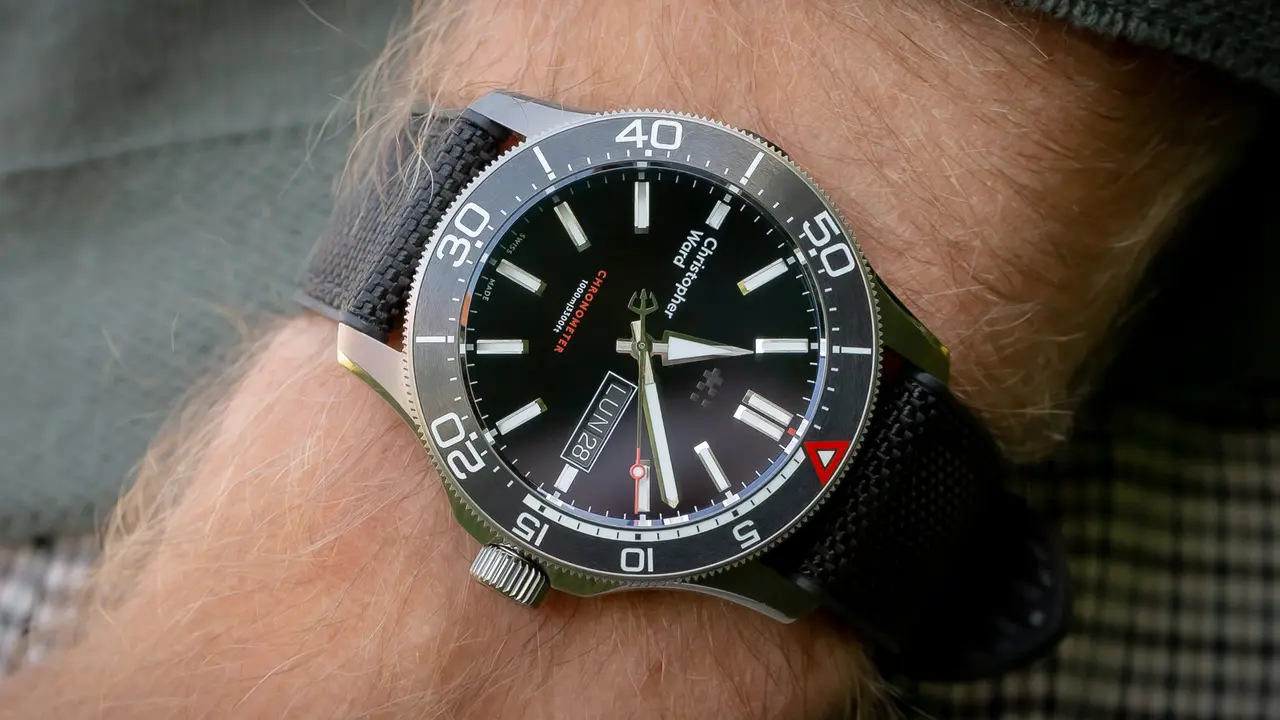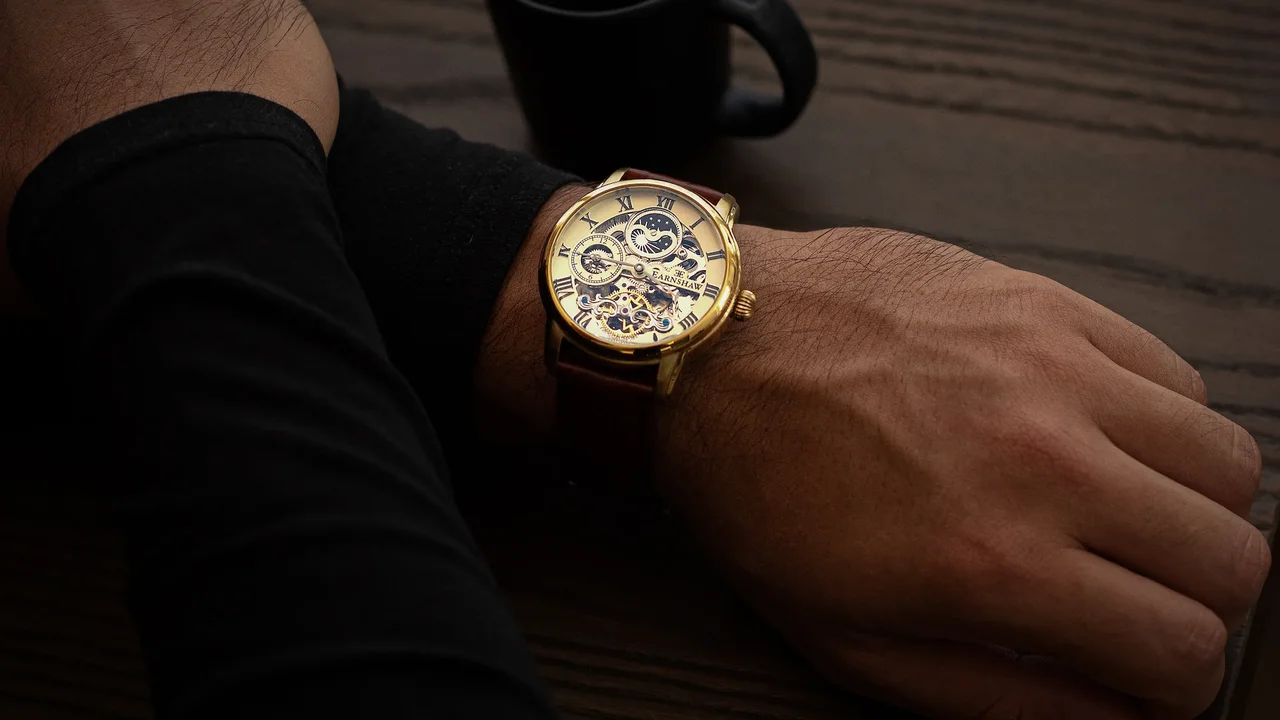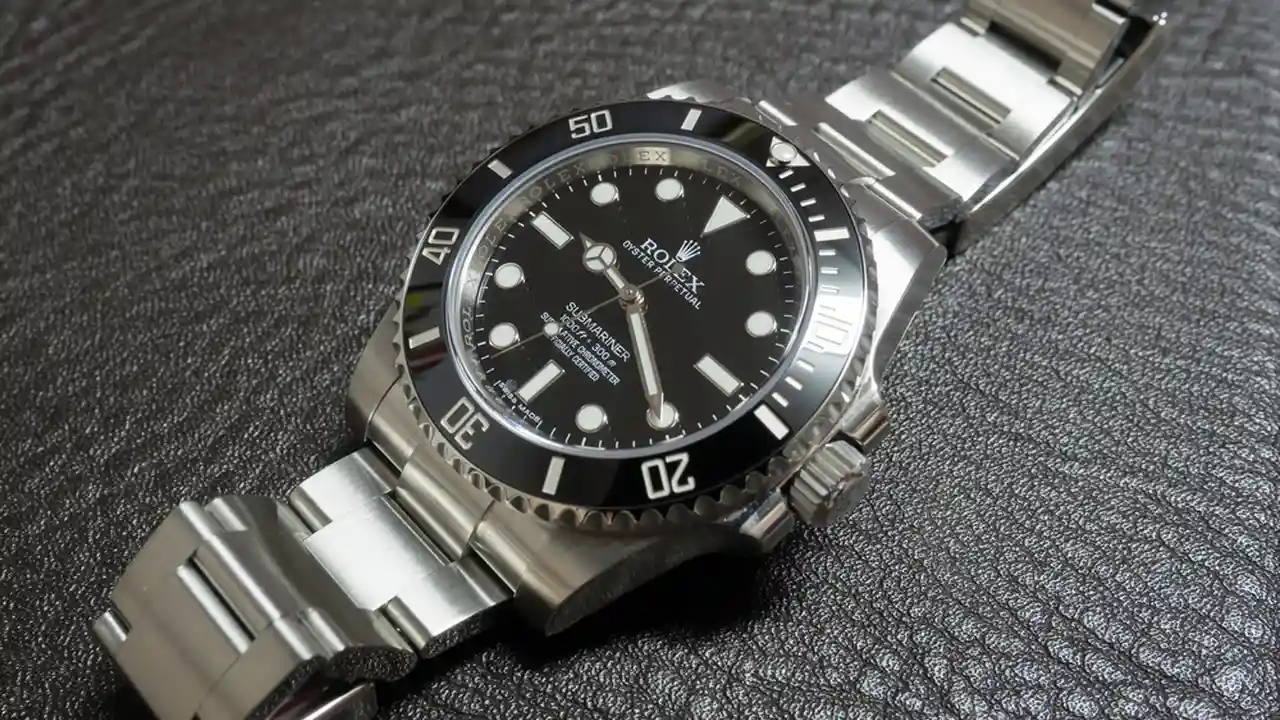The Art of Watch Photography: Capturing Stunning Images
Learn the basics of watch photography. Discover tips and techniques for capturing stunning images of your timepieces for social media or personal enjoyment.

Why Watch Photography Matters For Watch Enthusiasts
Let's face it, in today's digital world, if it isn't on Instagram, did it even happen? For watch lovers, this is especially true. Sharing photos of your prized timepieces isn't just about showing off (though, let's be honest, there's a little of that!). It's about connecting with a community, appreciating the artistry of watchmaking, and documenting your horological journey. Good watch photography can elevate your watch from a simple accessory to a piece of art.
Gear Up: Essential Equipment for Watch Photography
You don't need a professional studio to take great watch photos. Here's a breakdown of the essential gear:
- Camera: Your smartphone camera is a great place to start! Modern smartphones have impressive cameras that can capture stunning detail. If you want to take it to the next level, consider a DSLR or mirrorless camera. These offer more control over settings and produce higher-quality images.
- Lens (for DSLR/Mirrorless): A macro lens is ideal for capturing the intricate details of a watch. If you don't have a macro lens, a standard zoom lens can work, but you'll need to crop the images later. Look for something in the 50mm-100mm range.
- Lighting: Good lighting is crucial. Natural light is your best friend. Shoot near a window or outdoors on a cloudy day for soft, even lighting. Avoid direct sunlight, as it can create harsh shadows. If you need artificial lighting, consider a softbox or ring light to diffuse the light.
- Tripod: A tripod is essential for sharp images, especially in low light. It eliminates camera shake and allows you to use longer shutter speeds.
- Background: Choose a simple, uncluttered background that won't distract from the watch. A plain white or black surface works well. You can also use textured backgrounds like wood, leather, or fabric to add interest.
- Props (Optional): Props can add context and personality to your photos. Consider using watch boxes, tools, books, or other items that complement the watch's style.
Mastering the Art of Watch Lighting For Instagram-worthy Shots
Lighting is the key to great watch photography. Here are some tips:
- Natural Light is Your Best Friend: As mentioned, natural light is ideal. Experiment with different times of day to see how the light changes. The 'golden hour' (the hour after sunrise and the hour before sunset) provides warm, flattering light.
- Diffuse the Light: If the light is too harsh, use a diffuser (like a piece of white paper or a softbox) to soften it.
- Avoid Direct Sunlight: Direct sunlight creates harsh shadows and can wash out the colors of your watch.
- Experiment with Angles: Try different lighting angles to see how they affect the shadows and highlights on the watch. Side lighting can emphasize texture and detail.
- Use Reflectors: Reflectors can bounce light back onto the watch to fill in shadows and brighten the image. You can use a piece of white cardboard or a professional reflector.
Composition Techniques for Captivating Watch Photos
Composition refers to the arrangement of elements within your photo. Here are some techniques to create visually appealing images:
- Rule of Thirds: Imagine dividing your image into nine equal parts with two horizontal and two vertical lines. Place the watch at one of the intersections of these lines for a more dynamic composition.
- Leading Lines: Use lines in your photo to draw the viewer's eye to the watch. For example, you could use the lines of a strap or the edge of a table.
- Symmetry: Symmetrical compositions can be very pleasing to the eye. Center the watch in the frame and ensure that the background is balanced.
- Negative Space: Use negative space (empty areas in your photo) to create a sense of calm and highlight the watch.
- Angles and Perspectives: Don't be afraid to experiment with different angles and perspectives. Try shooting from a low angle to make the watch look more imposing, or from a high angle for a more abstract view.
Camera Settings: Getting the Technical Stuff Right
If you're using a DSLR or mirrorless camera, understanding camera settings is essential for achieving the desired results. Here are some key settings to consider:
- Aperture: Aperture controls the depth of field (the area of the image that is in focus). A wide aperture (e.g., f/2.8) creates a shallow depth of field, which is ideal for isolating the watch and blurring the background. A narrow aperture (e.g., f/16) creates a deep depth of field, which is useful for capturing the entire watch in focus.
- Shutter Speed: Shutter speed controls the amount of time that the camera's sensor is exposed to light. A fast shutter speed (e.g., 1/200 second) is useful for freezing motion and preventing camera shake. A slow shutter speed (e.g., 1 second) allows more light to enter the camera, but it can also result in blurry images if the camera is not stable. Use a tripod for slow shutter speeds.
- ISO: ISO controls the sensitivity of the camera's sensor to light. A low ISO (e.g., 100) produces the cleanest images with the least amount of noise. A high ISO (e.g., 3200) allows you to shoot in low light, but it can also introduce noise (graininess) into the image.
- White Balance: White balance ensures that the colors in your photo are accurate. Choose the appropriate white balance setting for the lighting conditions (e.g., daylight, cloudy, tungsten).
- Focusing: Use manual focus to ensure that the watch is perfectly sharp. Zoom in on the watch in live view and adjust the focus until the details are crisp.
Post-Processing: Enhancing Your Watch Photos
Post-processing is the final step in watch photography. Editing software like Adobe Lightroom, Photoshop, or Snapseed (a free mobile app) can be used to enhance your photos. Here are some common post-processing techniques:
- Cropping: Crop the image to improve the composition and remove distractions.
- Adjusting Exposure and Contrast: Adjust the exposure to brighten or darken the image. Adjust the contrast to increase the difference between the light and dark areas.
- Adjusting White Balance: Fine-tune the white balance to ensure that the colors are accurate.
- Sharpening: Sharpen the image to enhance the details.
- Removing Blemishes: Use the clone stamp or healing brush to remove dust spots, scratches, or other blemishes.
- Color Correction: Adjust the colors to create a desired mood or style.
Showcase: Recommended Watches and Photography Setups
Let's look at some specific watch recommendations and how you might photograph them:
Example 1: Seiko 5 Sports (SRPD Series) - The Everyday Hero
Watch: Seiko 5 Sports SRPD79 (Blacked-out version)
Price: ~$250
Description: A versatile and affordable automatic watch. Great for everyday wear and easily styled. The blacked-out version is particularly photogenic.
Photography Setup:
- Background: Dark grey concrete surface or a black leather mat.
- Lighting: Soft, diffused natural light from a window.
- Props: A worn leather wallet, a vintage map, or a cup of black coffee.
- Focus: Focus on the dial, highlighting the Seiko logo and the day-date complication.
- Post-Processing: Slightly increase the contrast and sharpness to emphasize the ruggedness of the watch.
Example 2: Tissot PRX Powermatic 80 - The Integrated Bracelet Beauty
Watch: Tissot PRX Powermatic 80 (Blue dial)
Price: ~$650
Description: A stylish and modern watch with an integrated bracelet. The blue dial is particularly striking and catches the light beautifully.
Photography Setup:
- Background: Clean white surface or a light grey marble tile.
- Lighting: Bright, even lighting from a softbox.
- Props: A stylish pen, a notebook, or a pair of sunglasses.
- Focus: Focus on the bracelet, highlighting the integrated design and the brushed finish.
- Post-Processing: Slightly reduce the highlights and increase the shadows to bring out the details of the dial and bracelet.
Example 3: Casio G-Shock GA-2100 'Casioak' - The Indestructible Icon
Watch: Casio G-Shock GA-2100 (Black)
Price: ~$100
Description: A tough and durable watch that's perfect for outdoor adventures. The minimalist design and the octagonal bezel make it a unique and recognizable timepiece.
Photography Setup:
- Background: A textured surface like sand, gravel, or a piece of wood.
- Lighting: Natural sunlight, but avoid direct sunlight.
- Props: A compass, a knife, or a hiking boot.
- Focus: Focus on the watch's ruggedness and durability. Show it in an outdoor setting.
- Post-Processing: Slightly increase the saturation and contrast to emphasize the watch's colors and textures.
Smartphone Photography Tips: Elevating Your Mobile Watch Shots
Don't have a fancy camera? No problem! Here are some tips for taking great watch photos with your smartphone:
- Clean Your Lens: A dirty lens can significantly degrade the quality of your photos.
- Use Natural Light: As with DSLR photography, natural light is your best friend.
- Avoid Digital Zoom: Digital zoom degrades the quality of your images. Instead, move closer to the watch.
- Use a Tripod: A mini tripod can help stabilize your phone and prevent blurry images.
- Experiment with Different Angles: Try different angles and perspectives to find the most flattering view of the watch.
- Use Editing Apps: Editing apps like Snapseed and VSCO can help you enhance your photos.
Common Mistakes to Avoid in Watch Photography
Here are some common mistakes to avoid:
- Poor Lighting: Avoid harsh lighting, direct sunlight, and dimly lit environments.
- Cluttered Backgrounds: Choose a simple, uncluttered background that won't distract from the watch.
- Blurry Images: Use a tripod to prevent camera shake and ensure that the watch is in focus.
- Dust and Fingerprints: Clean the watch thoroughly before taking photos.
- Over-Editing: Avoid over-editing your photos. Keep the adjustments subtle and natural.
Sharing Your Watch Photos with the World
Once you've taken some great watch photos, it's time to share them with the world! Here are some popular platforms for sharing your watch photos:
- Instagram: Instagram is the most popular platform for sharing watch photos. Use relevant hashtags to reach a wider audience (e.g., #watchphotography, #watchfam, #wristshot).
- Watch Forums: Share your photos on watch forums like Watchuseek, Reddit's r/watches, and TimeZone.
- Personal Blog or Website: If you have a blog or website, you can create a gallery of your watch photos.
Remember to engage with the watch community. Comment on other people's photos, ask questions, and share your knowledge.
Final Thoughts on Mastering Watch Photography
Watch photography is a rewarding hobby that allows you to appreciate the beauty and craftsmanship of timepieces. With a little practice and the right equipment, you can capture stunning images that will impress your friends and followers. So grab your camera (or your phone), find a beautiful watch, and start shooting!
:max_bytes(150000):strip_icc()/277019-baked-pork-chops-with-cream-of-mushroom-soup-DDMFS-beauty-4x3-BG-7505-5762b731cf30447d9cbbbbbf387beafa.jpg)






